



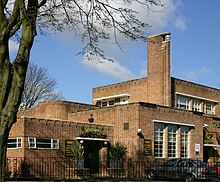
Edwin Francis Reynolds LRIBA (30 November 1875 - 19 January 1949) was an English architect based in Birmingham. [1]





Edwin Francis Reynolds LRIBA (30 November 1875 - 19 January 1949) was an English architect based in Birmingham. [1]
He was educated at King Edward's School, Birmingham, and then articled to Cossins & Peacock from 1893 to 1896. From 1897 to 1899 he was assistant to William Henry Bidlake, and then from 1900 to 1901 to Runtz & Ford.
He started his own practice in 1905.
He was appointed Licentiate of the Royal Institute of British Architects in 1911.
Edgbaston is a suburb of Birmingham, West Midlands, England. It lies immediately south-west of Birmingham city centre, and was historically in Warwickshire. The wards of Edgbaston and North Edgbaston had a combined population of 42,295 at the 2021 census.

Acocks Green is a suburban area and ward of southeast Birmingham, England. It is named after the Acock family, who built a large house there in 1370. It is occasionally spelled "Acock's Green". It has frequently been noted on lists of unusual place names.

Quinton is a suburb and ward of Birmingham, England, 5 miles (8 km) west of the city centre. Formerly part of Halesowen parish, Quinton became part of Birmingham in 1909. Quinton was a village and the surrounding area was farmland until the 1930s when the first housing estates were developed. Most of the farmland had been built on by 1980 but some countryside remains in the form of Woodgate Valley Country Park. Along with Bartley Green, Harborne and Edgbaston, Quinton is within the Birmingham Edgbaston constituency.
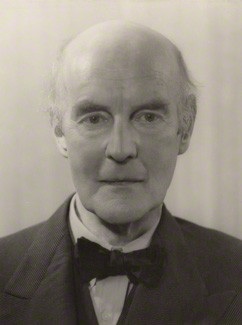
Sir Edward Brantwood Maufe, RA, FRIBA was an English architect and designer. He built private homes as well as commercial and institutional buildings, and is remembered chiefly for his work on places of worship and memorials. Perhaps his best known buildings are Guildford Cathedral and the Air Forces Memorial. He was a recipient of the Royal Gold Medal for architecture in 1944 and, in 1954, received a knighthood for services to the Imperial War Graves Commission, which he was associated with from 1943 until his death.

Although Birmingham in England has existed as a settlement for over a thousand years, today's city is overwhelmingly a product of the 18th, 19th, and 20th centuries, with little surviving from its early history. As it has expanded, it has acquired a variety of architectural styles. Buildings of most modern architectural styles in the United Kingdom are located in Birmingham. In recent years, Birmingham was one of the first cities to exhibit the blobitecture style with the construction of the Selfridges store at the Bullring Shopping Centre.

Julius Alfred Chatwin FRIBA, ARBS, FSAScot was a British architect. He was involved with the building and modification of many churches in Birmingham, and practised both Neo-Gothic and Neo-Classical styles. His designs always included all of the carvings and internal fittings.

The Church of St Augustine of Hippo in Lyttelton Road, Edgbaston, Birmingham, England, is a parish church in the Church of England.

William Henry Bidlake MA, FRIBA was a British architect, a leading figure of the Arts and Crafts movement in Birmingham and Director of the School of Architecture at Birmingham School of Art from 1919 until 1924.

Holland William Hobbiss, was an English architect in the Birmingham area. He traded under the names Holland W. Hobbiss and Partners and Holland W. Hobbiss and M. A. H. Hobbiss.

Charles Edward Bateman FRIBA was an English architect, known for his Arts and Crafts and Queen Anne-style houses and commercial buildings in the Birmingham area and for his sensitive vernacular restoration and extension work in the Cotswolds.
This article is intended to show a timeline of events in the History of Birmingham, England, with a particular focus on the events, people or places that are covered in Wikipedia articles.
Thomas Cecil Howitt, OBE was a British provincial architect of the 20th Century. Howitt is chiefly remembered for designing prominent public buildings, such as the Council House and Processional Way in Nottingham, Baskerville House in Birmingham, Newport Civic Centre, and several Odeon cinemas. Howitt's chief architectural legacies are in his home city of Nottingham. He was Housing Architect for the City Council, designing municipal housing estates which are often considered to be among the finest in terms of planning in the country.
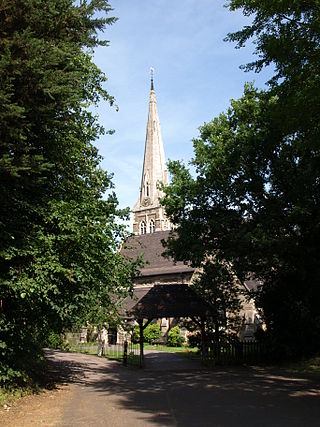
St. Mary's Church, Selly Oak is a Church of England parish church in Selly Oak, Birmingham, England.
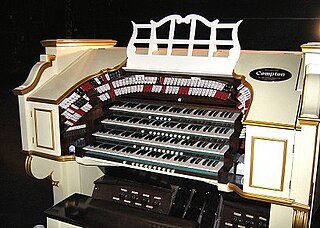
John Compton (1876–1957), born in Newton Burgoland, Leicestershire was a pipe organ builder. His business based in Nottingham and London flourished between 1902 and 1965.
Samuel Nathaniel Cooke Jr. was an English architect active in Birmingham, England in the early to mid 20th century. He was almost invariably credited as S. N. Cooke and his later work was carried out under the auspices of his firm S. N. Cooke and Partners. Works by him and the partnership include significant civic buildings, hospitals, and commercial premises in Birmingham and elsewhere in the United Kingdom.
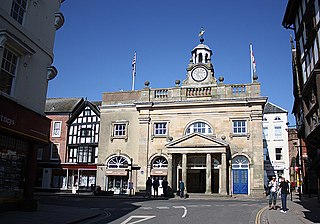
William Baker of Audlem (1705–1771) was an architect, surveyor and building contractor, working in Shropshire and the adjacent counties in the middle years of the 18th century.

Frank Barlow Osborn FRIBA was an English architect based in Birmingham.

John Fairweather FRIBA was a British architect who specialised in cinemas.

Charles Edge was a British architect based in Birmingham.